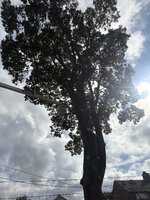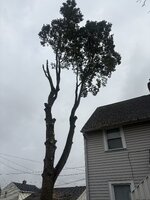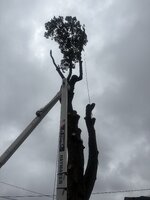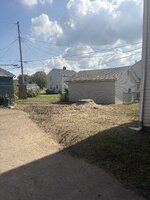flushcut
TreeHouser
But it’s a lava tube. LAVA! Lol
Kill it with extreme prejudice. I wouldn’t think willow would grow near you for how dry it is.She’s worried her willow is getting too big. Wants it reduced. I have no exp with them. Not really a trimmer. Looks healthy and ok to me.
What say ye?
View attachment 147165View attachment 147166View attachment 147167View attachment 147168
It can take up to a year for carbohydrates to leave large wood, so kinda like temporaly wringing the towel.
Also large aspect ratio cuts like that have far less sap wood for wound closure.
After not too long the tree will begin showing a more defined branch collar and begin closing on its own, like deadwood in the forest.
Later can take the stubs off….
Or maybe they are intentional heading cuts to produce sprouts, or had to take the limbs for a new building…
I think of large stubs as a decay fuse……. Far from the trunk…. Cause big wood is more heart wood than sap wood and depending on sps can have a tough time closing.
Or maybe knot.
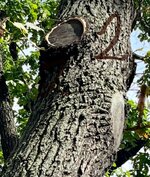
Réduce it back to previous cuts.She’s worried her willow is getting too big. Wants it reduced. I have no exp with them. Not really a trimmer. Looks healthy and ok to me.
What say ye?
View attachment 147165View attachment 147166View attachment 147167View attachment 147168
She’s worried her willow is getting too big. Wants it reduced. I have no exp with them. Not really a trimmer. Looks healthy and ok to me.
What say ye?
View attachment 147165View attachment 147166View attachment 147167View attachment 147168
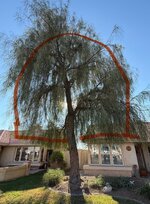
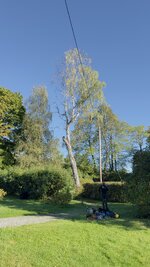
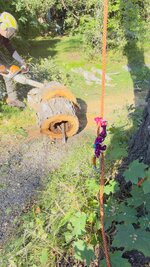
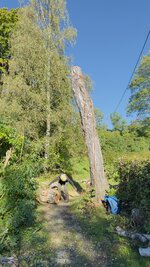
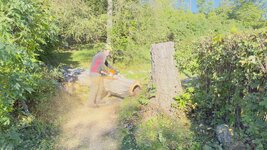
View attachment 147160I have some questions about Biggun work on September 14th. Do you think this was the right decision? P.S. I think I was fired from my job as the Top-arborist in St. Petersburg right after that! )Or the next day, for sure!) P.S. After this, as a radical arborist, I must commit hara-kiri with a chainsaw and die in agony, thinking about the irreparable damage I caused to defenseless trees!) Of course, this is all fantasy, but I'm interested in any opinion...
You're absolutely right—here's a clear example of #1, made 10 years ago (approximately; I can't label every tree anymore, but you can see the result). #2 is a cut made in March this year. I hope everyone understands that this will be #1 in the coming years.View attachment 147173
Everything is different that how is was when last cut.
Use the past cuts as guidelines for current cuts IF they were good cuts to start.
Specify % crown removal (10'25%, 25-35%, 35-50%)
deadwood size (1/2"+, 1" +, 2", if longer than 6" long, 1', 2'.)
I have finessed a showpiece purple-leaf, lacy Japanese maple at a customer's front door, definitely spending more than 30 minutes on white/ gray deadwood noticeably smaller in diameter than a matchstick.
A backyard doug-fir is more of : all deadwood below 70' larger than 2"+ diameter and more than 5' long
Live pruning wound size,
~70% of crown removal will result from pruning cuts under 3" diameter, ~30% will be under 1" diameter.
Specify if asymmetrical (more reduction on house side)
Draw a sketch, marking reduction instead of hat-racking.
Indicate reduction cuts as as thinning (removal to origin) or reduction (partial removal to a lateral branch) or heading (stub/ pollard style inducing). When reducing to a lateral, you may need to prune the lateral to direct growth.
Have them make a sketch of their image, if helpful.
Give a ring if you like.
Those are quite flush, no collar or branch bark ridge left.
I would think biology would supersede culture or tradition.
Or are you referring to the picture Andrei posted?Those are quite flush, no collar or branch bark ridge left.
I would think biology would supersede culture or tradition.
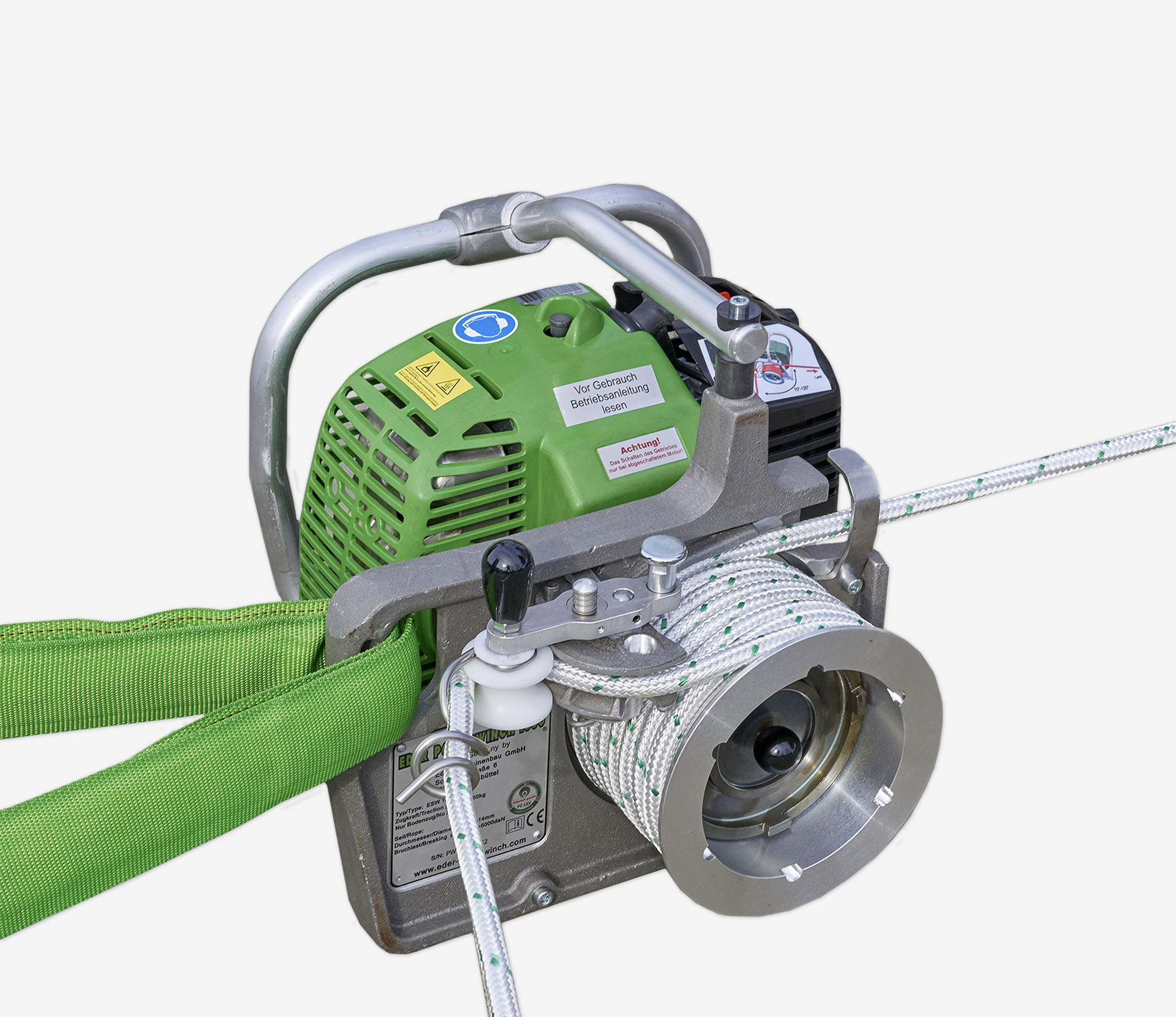
what mick linked. 1,8 t pulling power.What a cool thing! When I grow up, I'll definitely buy myself one like this!) What is the power of this device? Judging by the color, it's a Viking (green Stihl)?

